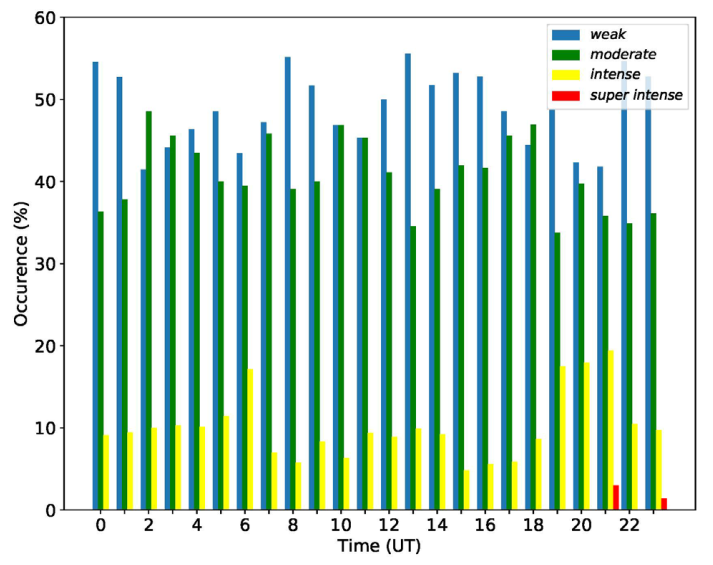A Study of the Relationship Between Southward Bz > -10 nT and Storm Time Disturbance Index During Solar Cycle 23
Keywords:
Magnetic reconnection , Dst, intense geomagnetic storm, moderate southward IMF- Bz, solar maximum, solar minimum, solar cycleAbstract
Magnetic reconnection can be used for studying the geoeffective processes in the coupled Sun–Solar wind – Magnetosphere dynamics leading to geomagnetic disturbance. In this study, 1-hour resolution solar wind plasma parameters from OMNIweb were used to investigate the relationship between moderate southward interplanetary magnetic field, IMF-Bz (i.e., Bz > -10 nT) and geomagnetic storm time disturbance, Dst , during the ascending, maximum and descending phases of solar cycle 23. Occurrences of different classes of geomagnetic storms during moderate southward Bz are reported. The occurrence of weak and moderate geomagnetic storms is more predominant during maximum solar activity than intense and super intense storms. It was found that 10.11 % (181) of all the classes of the storm were intense, and 0.17 % (3) were super intense storms. Furthermore, it was found that 4 (2.2 %) out of the 181 intense storms were caused by southward Bz > -10 nT which were associated with the complex structure due to the high-speed solar wind stream and corotating interacting region. In such a complex structure and Bz > -10 nT, we observed that an intense geomagnetic storm rarely occurs and if it does, would be predominant around solar maximum. It was found that long-duration (\Delta t > 6 hrs) of southward Bz (i.e., -10 nT < Bz <= -3.6 nT ) can also lead to an intense geomagnetic storm during the solar maximum and descending phase (moderate solar activity) of a solar cycle. The complex structure of intense geomagnetic storms associated with the Bz > -10 nT is rare and possesses a special configuration of magnetic field and solar wind parameters structures which are CIR manifestations.

Published
How to Cite
Issue
Section
Copyright (c) 2022 T. W. David, B. J. Adekoya, C. M. Michael, S. A. Adekoya, O. A. Adenuga, S. O. Kareem, H. T. Oladunjoye, A. E. Ajetunmobi, O. T. Williams, D. T. Ogundele

This work is licensed under a Creative Commons Attribution 4.0 International License.





